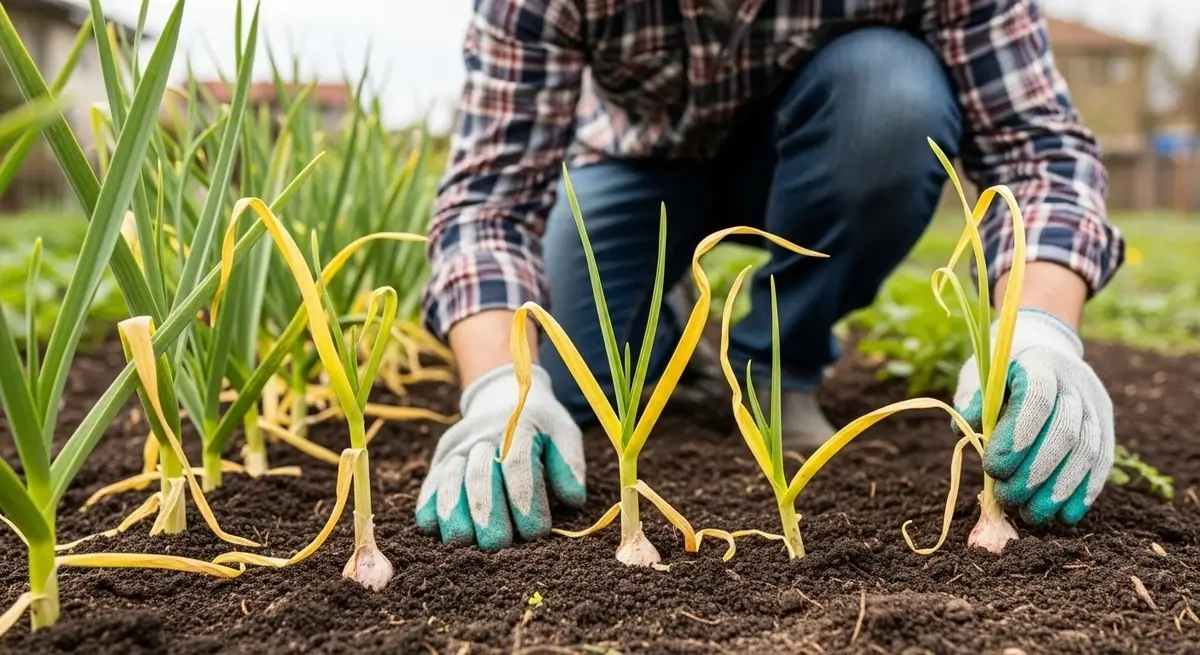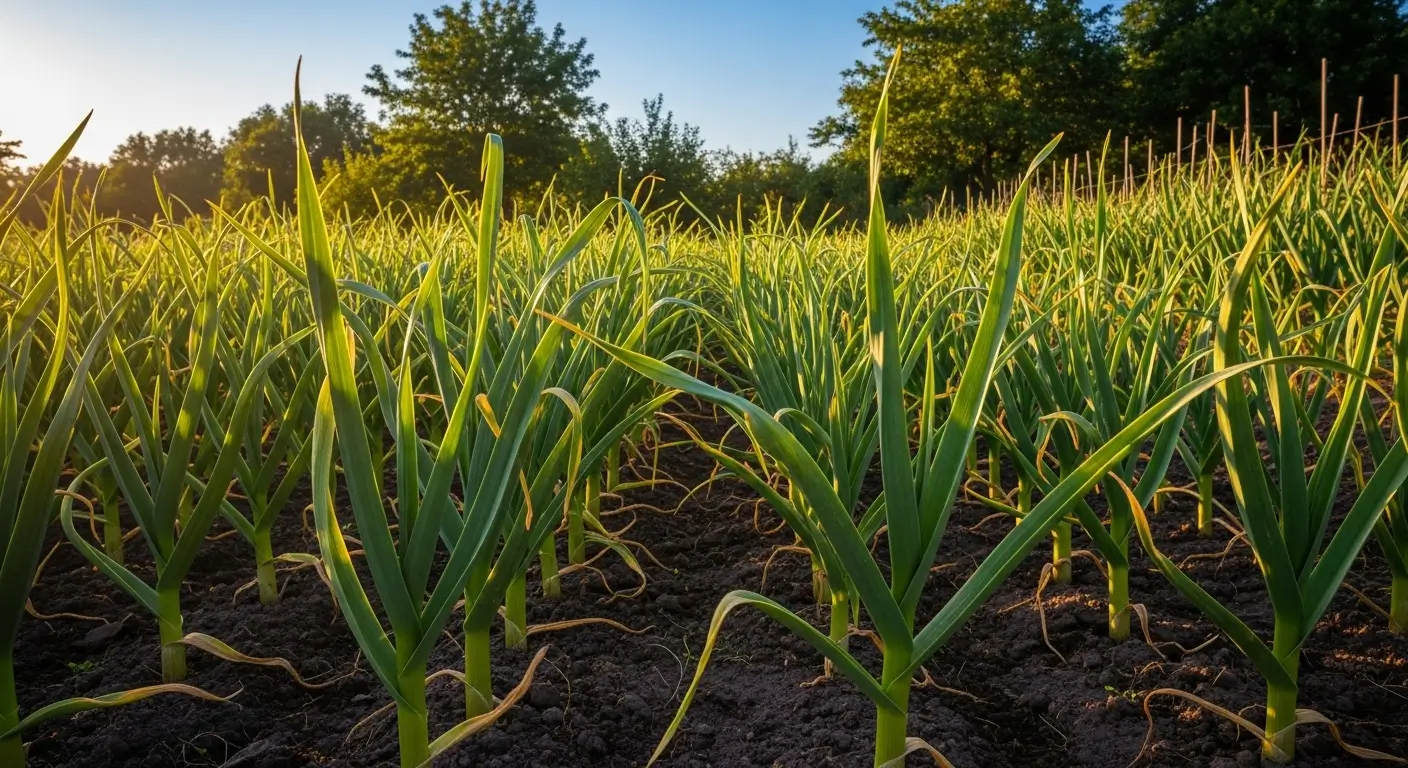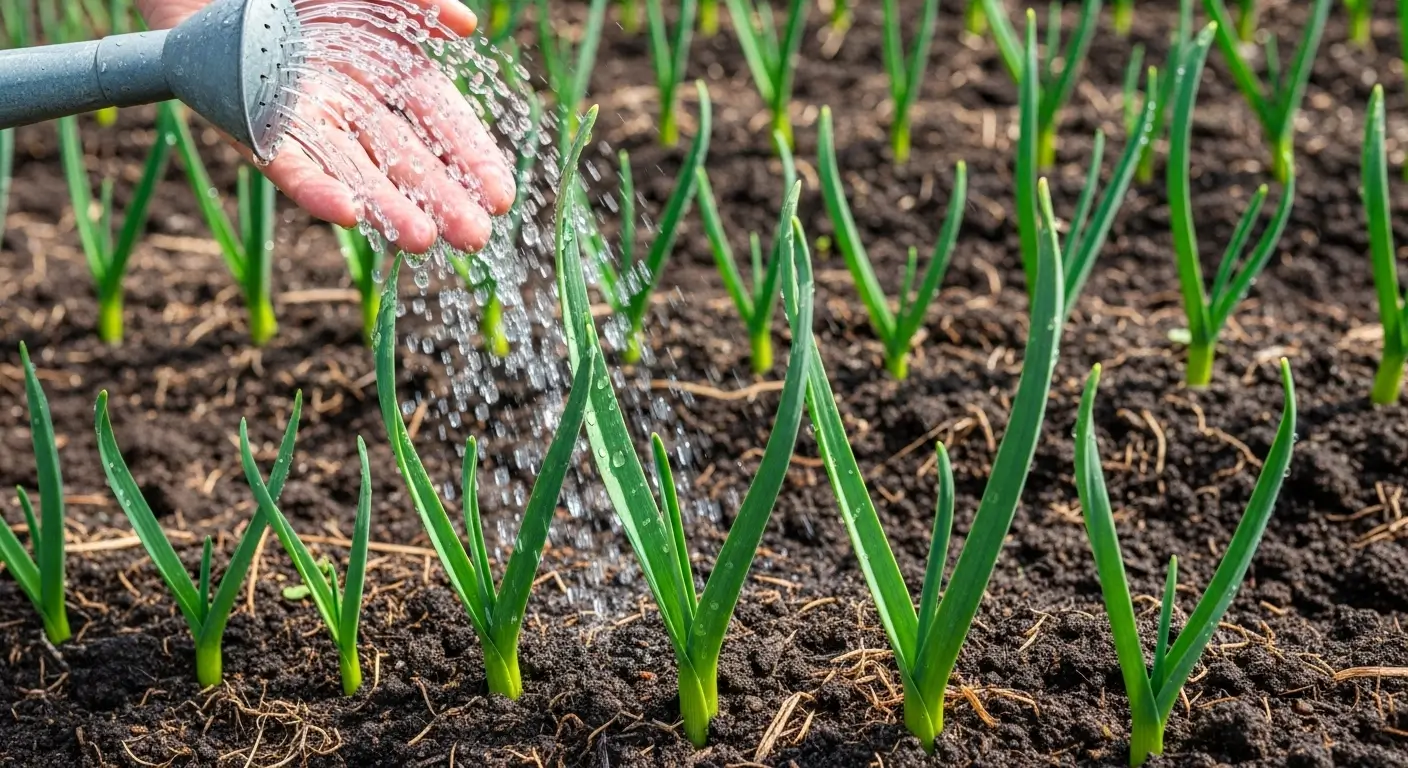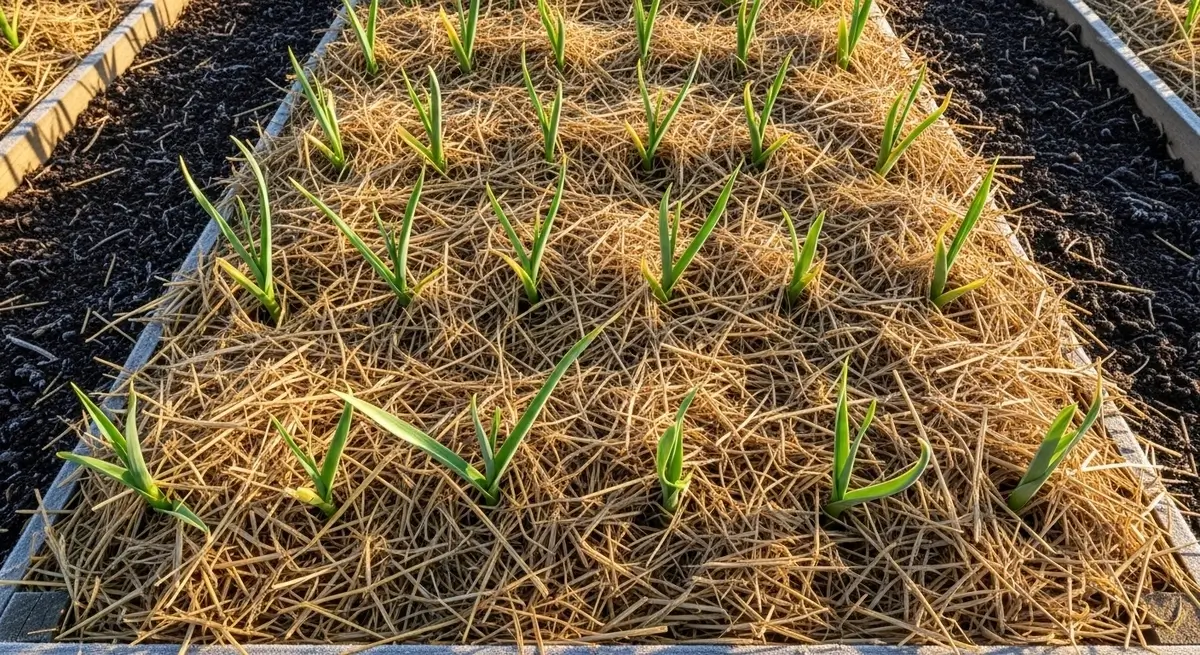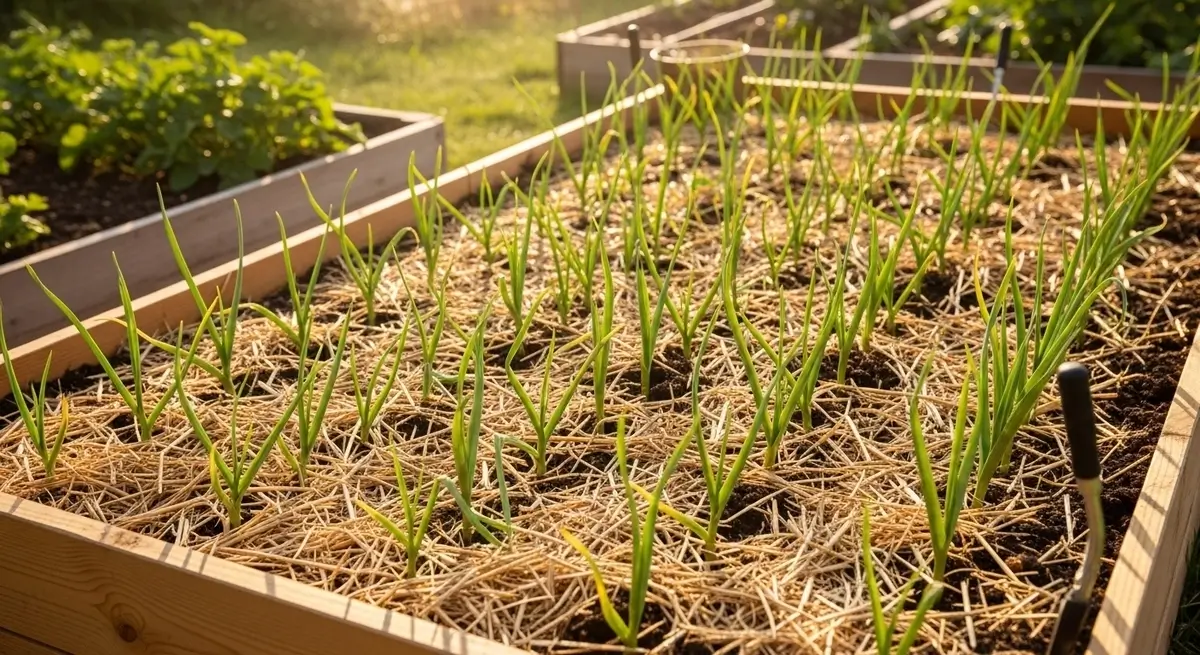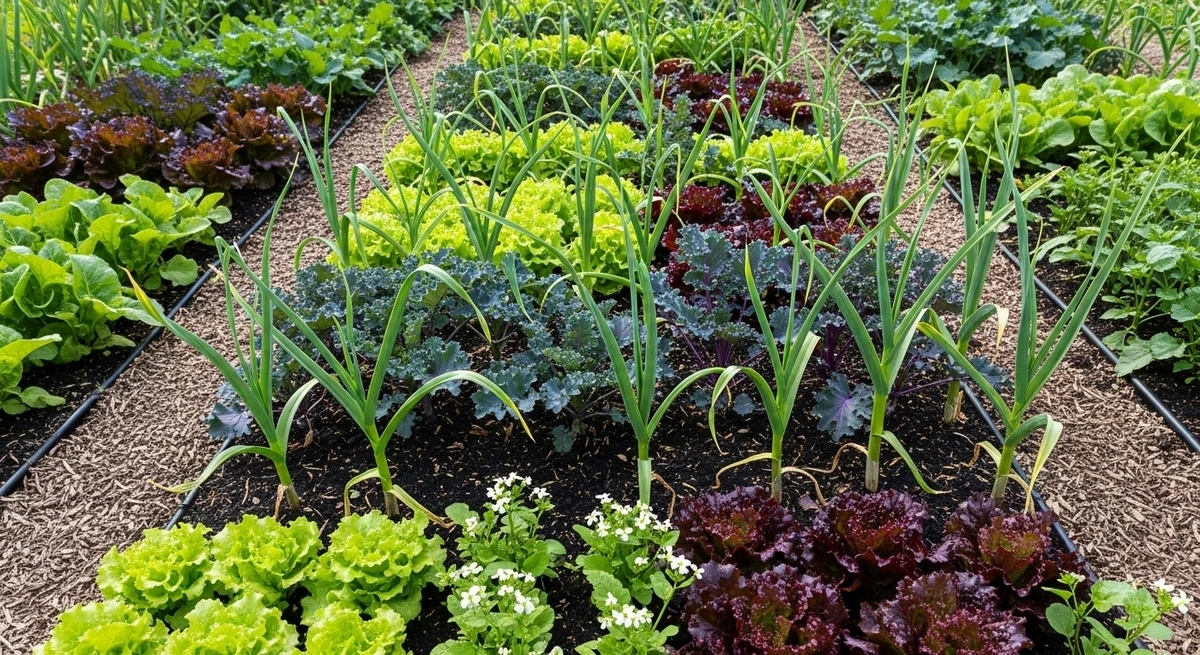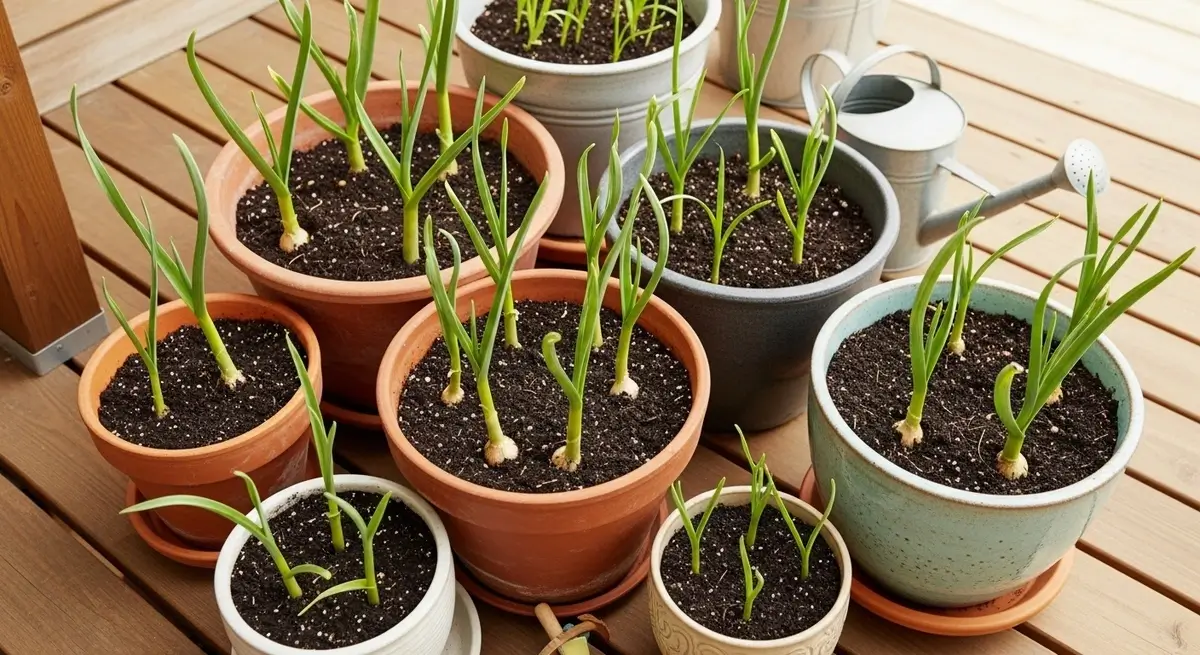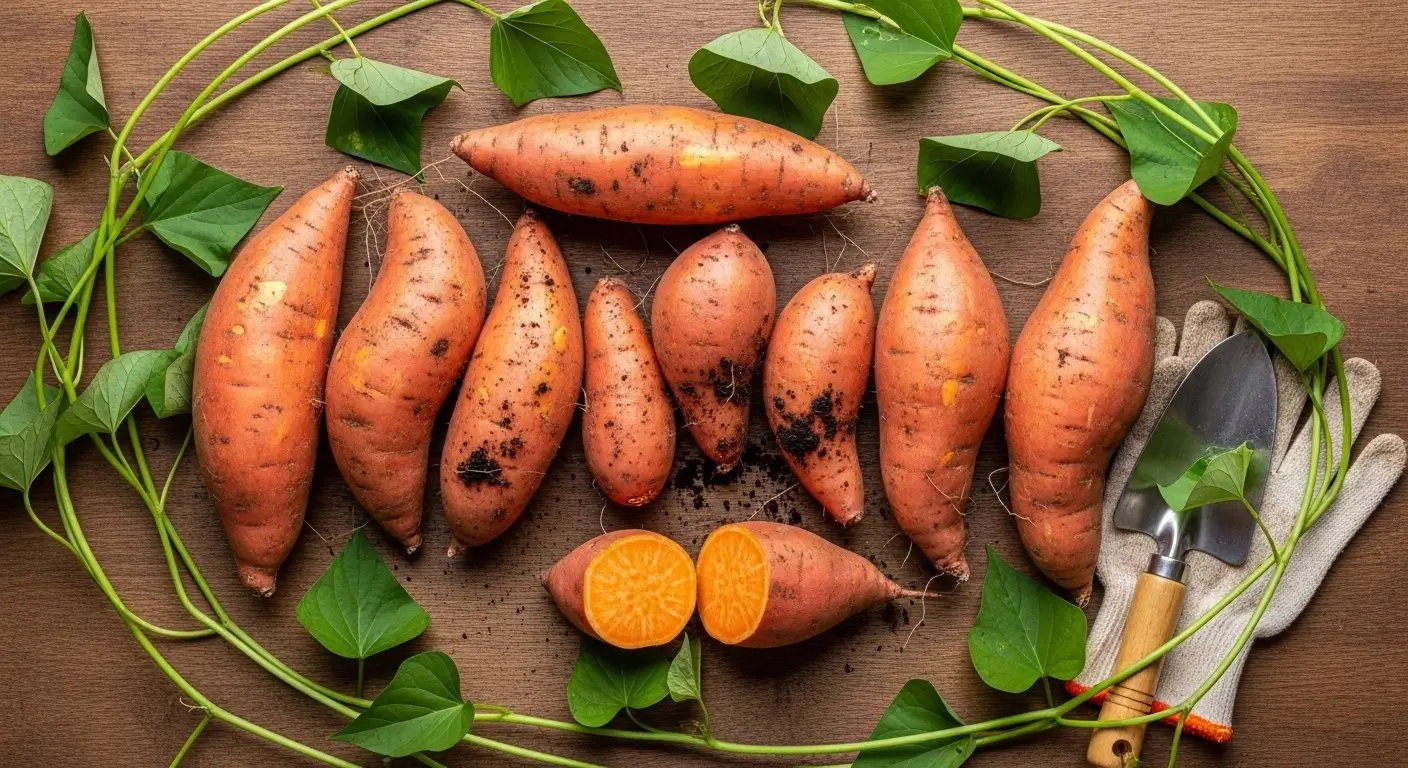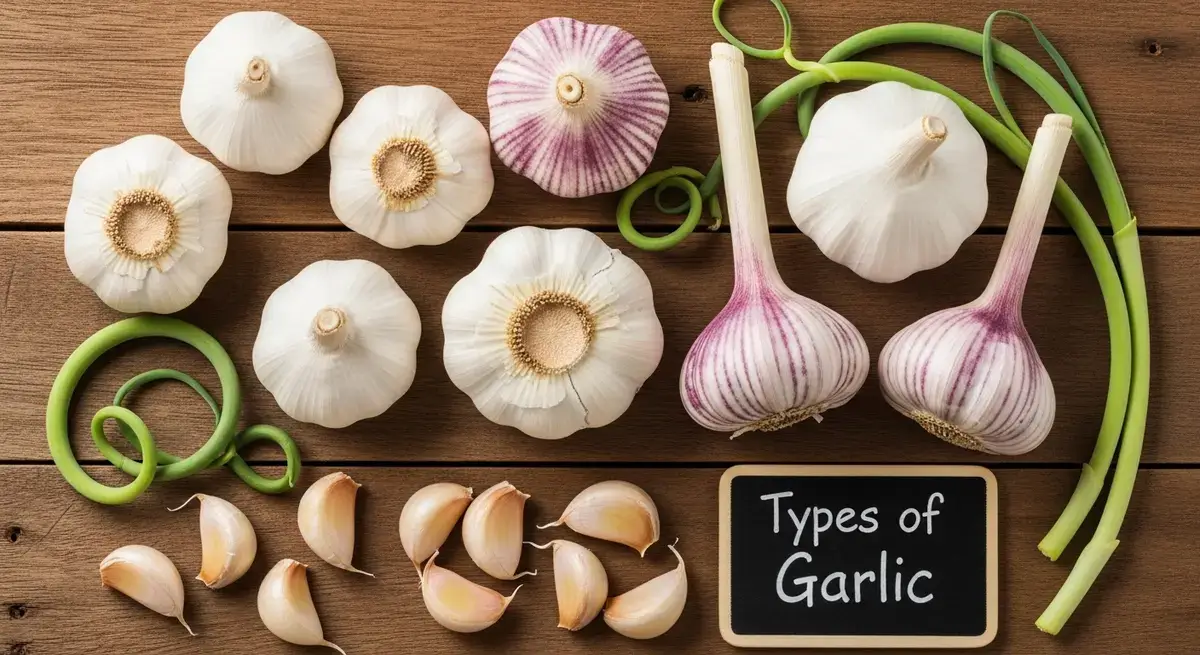Dealing with garlic growing problems can feel like your plants are personally out to get you. So there I was last spring, standing in my garden with my neighbor Jim, staring at what can only be described as the saddest excuse for garlic I’d ever seen. “Grace,” he says, looking like someone just told him his dog ate his homework, “I think my garlic hates me.”
Honestly? I couldn’t blame him for thinking that. His poor little garlic shoots looked like they’d given up on life – all yellow and wimpy, basically the plant equivalent of a defeated sigh. But here’s the thing I told Jim (and I’m telling you): most garlic growing problems aren’t actually your fault. Your garlic isn’t trying to make your life difficult – it’s just got some opinions about how it wants to be treated.
I’ve been growing garlic for over 15 years now, and let me tell you – my first attempts were absolutely tragic. Like, embarrassingly bad. I’m talking marble-sized bulbs that wouldn’t have flavored a single piece of toast. But you know what? Every epic fail taught me something, and now my garlic beds are pretty darn reliable.
So if your garlic is throwing a tantrum, don’t panic. Most garlic growing problems are totally fixable once you figure out what’s bugging your plants. And trust me, after dealing with every possible garlic disaster, I’ve got some tricks up my sleeve.
Table of Contents
Quick Solutions for Common Garlic Growing Problems
Before we get into the weeds (pun intended), here’s what you really need to know:
- Timing is everything – seriously, plant too early or too late and you’re asking for trouble
- Soggy soil = dead garlic – these babies hate wet feet more than cats hate baths
- Yellow leaves aren’t always bad news – sometimes they’re just doing their thing
- Prevention beats playing plant doctor – way easier to stop problems than fix them
- Patience, grasshopper – garlic moves at its own pace, especially early on
Let’s dive into the most common ways garlic can drive you absolutely nuts (and how to fix them).
When Your Garlic Decides to Play Hide and Seek
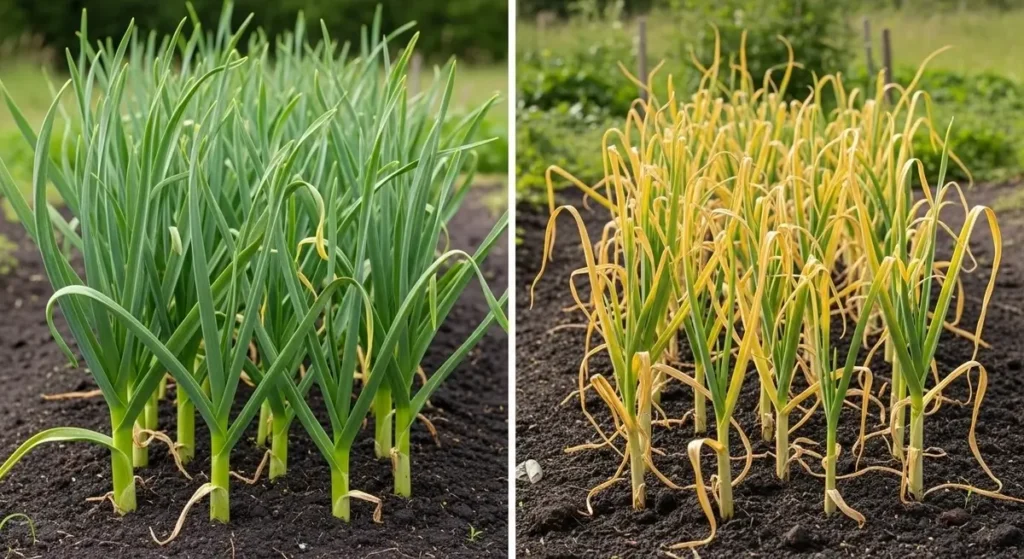
The Great Garlic Vanishing Act
Nothing makes you question your gardening skills like planting a bunch of garlic cloves and then… crickets. Just empty soil staring back at you like it’s mocking your efforts.
Why your garlic is ghosting you:
- You grabbed that grocery store garlic (rookie mistake – it’s usually treated so it won’t sprout)
- Your soil is basically a swimming pool
- You planted them upside down (we’ve all been there)
- Mother Nature decided to throw some curveballs with weird weather
How to fix it: Get proper seed garlic from actual garden suppliers – yes, it costs more, but it’s worth it. Plant those cloves pointy-end up about 2 inches deep, and make sure your soil drains for the love of all things green! If you’re dealing with clay soil like I am, consider raised beds for your garlic – game changer, trust me.
When Your Garlic Looks Like It Needs a Protein Shake
Spindly, weak garlic shoots are just sad. They look like they’re apologizing for existing, and honestly, they probably won’t amount to much if you don’t intervene.
What’s making your garlic weak?
- It’s starving (poor soil nutrition)
- You crammed them together like sardines
- Not enough sun (garlic is surprisingly sun-hungry)
- Weeds are bullying your baby plants
The game plan: Feed those hungry plants! I hit mine with organic fertilizer when they’re about 6 inches tall. Give each clove some breathing room – 4-6 inches apart minimum. And keep those weeds away from your garlic’s personal space.
The Yellow Leaf Mystery (This One’s Tricky)
Okay, this is where things get interesting. Yellow garlic leaves can mean “everything’s fine” OR “we have a situation.” Fun, right?
Good yellowing: When it’s getting close to harvest time (usually mid-summer), bottom leaves naturally turn yellow and die back. This is actually your garlic saying, “I’m almost ready!”
Bad yellowing: Early in the season, yellowing that starts at the tips, or when multiple leaves go yellow at once. This usually means:
- Too much water (garlic doesn’t like soggy feet)
- Fungal party happening in your soil
- Your plants are missing some nutrients
- Bugs are having a feast
How to tell: Normal yellowing starts at the bottom and works its way up slowly. Problem yellowing is more chaotic – it shows up randomly and spreads fast.
Dealing with Garlic’s Least Favorite Houseguests
Let’s talk about the uninvited guests that love to crash your garlic party. I used to get stressed about garlic pests and diseases, but most of them are manageable if you catch them early.
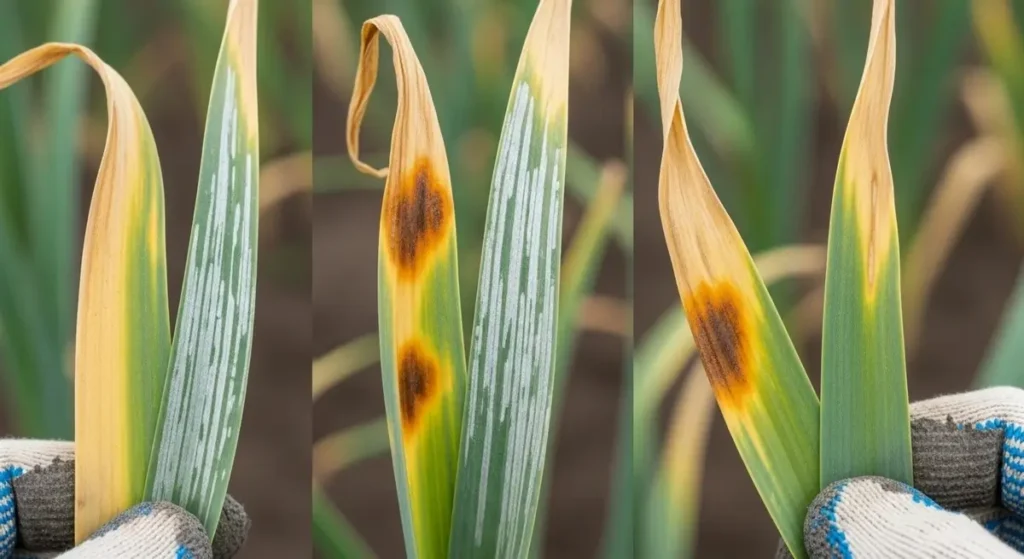
The Bug Brigade
Thrips: These tiny jerks leave silvery streaks on your leaves. They’re annoying but not usually fatal. I’ve had good luck with ladybugs (nature’s pest control) or insecticidal soap for bad infestations. For comprehensive pest identification and management strategies, UC’s Integrated Pest Management program offers detailed guidance.
Onion maggots: Their babies burrow into your bulbs – gross and destructive. The best defense? Don’t plant garlic in the same spot every year. Rotate, rotate, rotate!
Nematodes: Microscopic troublemakers that you can’t even see. They cause weird galls on roots and stunted growth. Prevention is key because once they’re established, you’re basically starting over.
Fungal Foes (The Uninvited Moisture Lovers)
White rot: This is the villain of the garlic world. It causes a white, cottony mess at the base of plants and can stick around in your soil for years. Drainage and crop rotation are your best friends here.
Rust: Shows up as orange-brown spots that eventually turn yellow. Don’t plant your garlic too close together (they need air circulation), and water at soil level, not from above.
Botrytis: Gray, fuzzy mold that loves cool, wet weather. Pull off affected leaves ASAP and improve that drainage!
Garlic’s Seasonal Mood Swings
Understanding what your garlic should be doing throughout the year makes troubleshooting way less stressful. Here’s the seasonal breakdown:
“Want to figure out exactly what’s wrong with your garlic right now? I created this quick diagnostic tool to help you identify the problem and get specific solutions. Just answer three simple questions and get personalized advice based on your garlic’s symptoms!”
🧄 Garlic Problem Diagnostic Tool
Answer a few quick questions to identify what’s wrong with your garlic and get personalized solutions!
Your Diagnosis
Now that you know what might be going on, let’s dive into what your garlic should be doing each season…
Fall Drama
Check your timing if your newly planted garlic isn’t settling in well. I plant mine in late October here in Illinois. Plant too early and they might sprout before winter (bad news bears). Too late, and they won’t develop good roots.
Spring Struggles
Weak or patchy spring emergence usually means soil issues. Cold, soggy soil is particularly problematic. I’ve learned to chill out and wait for warmer, drier weather before hitting the panic button.
Summer Shenanigans
Mid-season problems often come down to food and water. Your garlic needs steady moisture when bulbs form (late spring/early summer), but should start drying out as harvest approaches.
Want to know precisely what your garlic should look like throughout the growing season? Check out my complete garlic growth stages guide – it’s like having a garlic calendar!
When Your Garden Environment Isn’t Playing Nice
Sometimes it’s not bugs or diseases causing problems – it’s your growing conditions. Here’s what I’ve learned can make or break your garlic game:
Soil Personality Issues
Garlic is picky about dirt. It wants well-draining, fertile soil with a pH between 6.0 and 7.0. My heavy clay soil needed some serious therapy (aka compost and sand) to make garlic happy. Sandy soils need organic matter to hold onto water and nutrients.
Weather Weirdness
Crazy temperature swings stress out your garlic. Late freezes can zap emerging shoots, while random warm winter days can trick plants into growing too early. Mulch is your friend for smoothing out these temperature roller coasters.
Water Drama
Here’s my watering wisdom: consistency beats quantity every time. Deep, less frequent watering builds strong roots. And here’s a pro tip – stop watering 2-3 weeks before harvest to prevent bulb rot.
Playing Defense (Because Prevention is Way Easier)
After years of fighting garden problems after they showed up, I switched to a prevention-first approach. Game changer! Here’s what actually works:
Location, Location, Location
Pick your garlic spot carefully. Full sun, good drainage, and some wind protection set you up for success. I prep my beds in late summer with compost and ensure water doesn’t pool.
The Buddy System
Some plants actually help your garlic grow better! I’ve had great luck with garlic companion plants like roses, tomatoes, and carrots. It’s like having good neighbors for your plants.
Musical Chairs for Plants
Never plant garlic in the same spot two years running. I do a simple four-year rotation – it breaks disease cycles and keeps soil healthy.
When to Fight vs. When to Throw in the Towel
Sometimes, despite your best efforts, things go sideways. Here’s how I decide whether to keep fighting or start fresh:
Keep at it when:
- You caught the problems early, and only a few plants are affected
- The issue is temporary (like drought stress)
- You can fix the root cause
Cut your losses when:
- Soil diseases like white rot are confirmed (they’re persistent little buggers)
- More than half of your plants are seriously struggling
- The season’s too far along for plants to recover
Emergency Plant First Aid
If your garlic isn’t growing well, here are my go-to rescue moves:
For hungry plants: Side-dress with compost or organic fertilizer. Fish emulsion works great for quick nitrogen.
For stressed plants: Mulch heavily to conserve moisture and regulate soil temperature. Wood chips or straw are perfect.
For pest-damaged plants: Remove affected parts and improve growing conditions to help plants bounce back naturally.
Building Your Garlic Growing Superpowers
Here’s the real talk: getting good at growing garlic takes time. My first few years were a comedy of errors, but each mistake taught me something. Now my garlic beds are consistently awesome year after year.
The secret sauce? Think of garlic growing as a long-term friendship, not a one-night stand. Start with good varieties, prep your soil well, and don’t beat yourself up over mistakes – they’re how we learn!
For the complete garlic growing playbook, including various selections and planting basics, check out my how-to-grow garlic guide – it has everything you need to get started.
Remember, every gardener has a garlic graveyard in their past. What matters is learning from those plant casualties and using that knowledge to grow better garlic next season.
Let’s Figure This Out Together!
Dealing with garlic problems doesn’t have to make you want to give up gardening forever. Most issues are totally fixable with the right approach and a little patience. The key is figuring out what’s actually wrong (not what you think might be wrong), fixing the real problem instead of just the symptoms, and not being too proud to ask for help.
So what’s going on with your garlic? Are you dealing with any of these issues right now? I’d love to hear what’s happening in your garden and help you troubleshoot whatever drama your garlic is putting you through. Drop me a comment below – let’s solve this puzzle together!
Garlic Growing Problems – Frequently Asked Questions
Why isn’t my garlic growing after planting?
Oh, this is so frustrating! Usually it’s because you grabbed garlic from the grocery store (been there – they treat it so it won’t sprout), your soil is too soggy, or you planted at the wrong time. Get proper seed garlic from garden suppliers, make sure water drains well, plant those cloves 2 inches deep pointy-end up, and always plant in fall. Spring planting rarely works out well, trust me on this one.
What causes weak, spindly garlic growth?
Your garlic is basically starving! This happens when soil lacks nutrition (especially nitrogen), plants are crammed too close together, they’re not getting enough sun, or weeds are bullying them. Feed them with organic fertilizer when shoots hit 6 inches, give each plant 4-6 inches of personal space, make sure they get at least 6 hours of sunshine, and kick those weeds out of there.
Is yellowing garlic leaves normal or a problem?
This one’s tricky because it depends! If it’s late spring or summer and bottom leaves are turning yellow, that’s actually good – your bulbs are maturing. But if young leaves are yellowing early in the season, especially from the tips, then you’ve got issues like too much water, fungal problems, or missing nutrients. Learn to tell the difference and you’ll save yourself a lot of worry.
How do I treat garlic pests and diseases?
Garden pests are the worst! Silvery streaks mean thrips – hit them with insecticidal soap. Orange spots are rust – give your plants more breathing room. White fuzzy stuff at the base? That’s white rot, and it’s serious. Always remove affected leaves right away, don’t water from overhead, and never plant garlic in the same spot two years running.
When should I give up on struggling garlic plants?
I hate giving up on plants, but sometimes you have to cut your losses. Start over if you’ve confirmed nasty soil diseases, more than half your plants look terrible, or it’s too late in the season for them to recover. But keep fighting if you caught problems early, only a few plants are affected, or you know what went wrong and can fix it.
